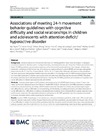| dc.contributor.author | Taylor, Alyx | |
| dc.contributor.author | Kong, Chuidan | |
| dc.contributor.author | Zhang, Zhihao | |
| dc.contributor.author | Herold, Fabian | |
| dc.contributor.author | Ludyga, Sebastian | |
| dc.contributor.author | Healy, Sean | |
| dc.contributor.author | Gerber, Markus | |
| dc.contributor.author | Cheval, Boris | |
| dc.contributor.author | Pontifex, Matthew | |
| dc.contributor.author | Kramer, Arthur F. | |
| dc.contributor.author | Chen, Sitong | |
| dc.contributor.author | Zhang, Yanjie | |
| dc.contributor.author | Muller, Notger G. | |
| dc.contributor.author | Tremblay, Mark S. | |
| dc.contributor.author | Zou, Liye | |
| dc.date.accessioned | 2023-04-11T12:20:39Z | |
| dc.date.available | 2023-04-11T12:20:39Z | |
| dc.date.issued | 2023-03-27 | |
| dc.identifier.citation | Taylor, A., Kong, C., Zhang, Z., Herold, F., Ludyga, S., Healy, S., Gerber, M., Cheval, B., Pontifex, M., Kramer, A. F., Chen, S., Zhang, Y., Muller, N. G., Tremblay, M. S., & Zou, L. (2023). Associations of meeting 24-h movement behavior guidelines with cognitive difficulty and social relationships in children and adolescents with attention deficit/hyperactive disorder. Child and Adolescent Psychiatry and Mental Health, 17(1), 42. https://doi.org/10.1186/s13034-023-00588-w | en |
| dc.identifier.issn | 1753-2000 | |
| dc.identifier.uri | https://aecc.archive.knowledgearc.net/handle/123456789/183 | |
| dc.description | Available under License - Creative Common Attribution: https://creativecommons.org/licenses/by/4.0/ | en |
| dc.description.abstract | Background: Evidence-based 24-h movement behavior (24-HMB) guidelines have been developed to integrate recommendations for the time spent on physical activity, sedentary behavior, and sleep. For children and adolescents, these 24-HMB guidelines recommend a maximum of two hours of recreational screen time (as part of sedentary behavior), a minimum of 60 min per day of moderate to vigorous physical activity (MVPA), and an age-appropriate sleep duration (9–11 h for 5 to 13-year-olds; 8–10 h for 14 to 17-year-olds). Although adherence to the guidelines has been associated with positive health outcomes, the effects of adhering to the 24-HMB recommendations have not been fully examined in children and adolescents with attention eficit/hyperactive disorder (ADHD). Therefore, this study examined potential associations between meeting the 24-HMB guidelines and indicators of cognitive and social difficulties in children and adolescents with ADHD.
Methods: Cross-sectional data on 3470 children and adolescents with ADHD aged between 6 and 17 years was extracted from the National Survey for Children’s Health (NSCH 2020). Adherence to 24-HMB guidelines comprised screen time, physical activity, and sleep. ADHD-related outcomes included four indicators; one relating to cognitive difficulties (i.e., serious difficulties in concentrating, remembering, or making decisions) and three indicators of social difficulties (i.e., difficulties in making or keeping friends, bullying others, being bullied). Logistic regression was performed to determine the associations between adherence to 24-HMB guidelines and the cognitive and social outcomes described above, while adjusting for confounders.
Results: In total, 44.8% of participants met at least one movement behavior guideline, while only 5.7% met all three. Adjusted logistic regressions further showed that meeting all three guidelines was associated with lower odds of cognitive difficulties in relation to none of the guidelines, but the strongest model included only screen time and physical activity as predictors (OR = 0.26, 95% CI 0.12–0.53, p < .001). For social relationships, meeting all three guidelines was associated with lower odds of difficulty keeping friends (OR = 0.46, 95% CI 0.21–0.97, p = .04) in relation to none of the guidelines. Meeting the guideline for screen time was associated with lower odds of being bullied (OR = 0.61, 95% CI 0.39–0.97, p = .04) in relation to none of the guidelines. While screen time only, sleep only and the combination of both were associated with lower odds of bullying others, sleep alone was the strongest predictor (OR = 0.44, 95% CI 0.26–0.76, p = .003) in relation to none of the guidelines.
Conclusion: Meeting 24-HMB guidelines was associated with reduced likelihood of cognitive and social difficulties in children and adolescents with ADHD. These findings highlight the importance of adhering to healthy lifestyle behaviors as outlined in the 24-HMB recommendations with regard to cognitive and social difficulties in children and adolescents with ADHD. These results need to be confirmed by longitudinal and interventional studies with a large sample size. | en |
| dc.language.iso | en | en |
| dc.publisher | Child and Adolescent Psychiatry and Mental Health | en |
| dc.title | Associations of meeting 24-h movement behavior guidelines with cognitive difficulty and social relationships in children and adolescents with attention deficit/hyperactive disorder | en |
| dc.type | Article | en |
| dc.identifier.doi | https://doi.org/10.1186/s13034-023-00588-w | |
